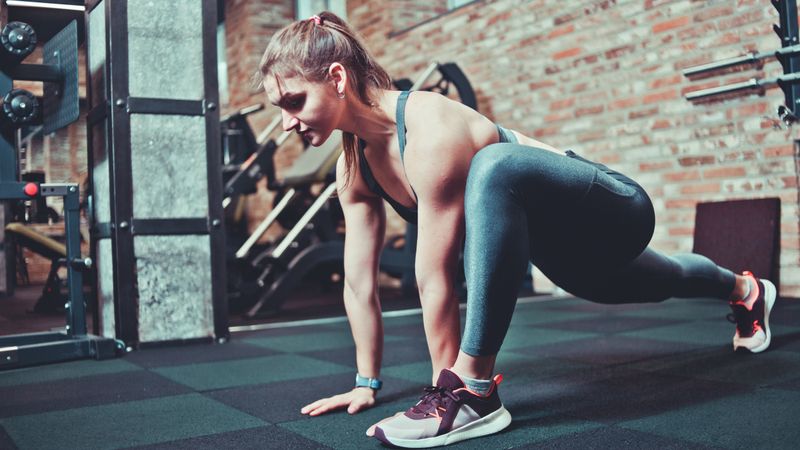
The Importance of Recovery and Mobility Exercises: A Comprehensive Guide
In the quest for physical fitness, we often focus on the intensity of our workouts, the number of reps and sets, and the weight we can lift. While these factors are undoubtedly crucial for achieving our fitness goals, we often overlook an equally essential aspect of our training regimen: recovery and mobility exercises. In this comprehensive guide, we’ll explore the significance of incorporating recovery and mobility exercises into your routine, their benefits, and some key exercises to help you improve your overall fitness.
Understanding Recovery and Mobility
What is Recovery?
Recovery in the context of exercise refers to the process of allowing your body to heal and adapt to the physical stress imposed during workouts. It encompasses various aspects, including rest, nutrition, and active strategies to aid recuperation. Proper recovery helps prevent injuries, reduce muscle soreness, and enhance overall performance.
What is Mobility?
Mobility pertains to your ability to move freely and efficiently through a full range of motion in your joints and muscles. Good mobility is essential for performing exercises with proper form, preventing injuries, and maintaining joint health. Mobility exercises often target specific areas of the body to improve flexibility and range of motion.
The Benefits of Recovery and Mobility Exercises
- Injury Prevention: Regular recovery and mobility exercises can reduce the risk of injuries by addressing muscle imbalances, improving joint stability, and increasing overall flexibility.
- Improved Performance: Enhanced mobility allows for better movement patterns and mechanics during exercises, translating into improved athletic performance and strength gains.
- Reduced Muscle Soreness: Active recovery techniques such as stretching, foam rolling, and yoga can alleviate muscle soreness, making it easier to stick to your exercise routine.
- Enhanced Flexibility: Mobility exercises help you attain and maintain proper joint alignment, which is crucial for flexibility. This can improve posture and reduce the risk of chronic pain.
- Stress Reduction: Many mobility exercises, such as yoga and deep stretching, promote relaxation and stress reduction, contributing to mental well-being.
- Longevity: Mobility exercises can help maintain joint health as you age, potentially delaying the onset of age-related conditions like osteoarthritis.
Key Recovery and Mobility Exercises
1. Foam Rolling
Foam rolling is a form of self-myofascial release that helps release muscle knots and tension. It’s particularly effective for post-workout recovery. Common areas to target include the calves, quads, hamstrings, and upper back.
2. Static Stretching
Static stretching involves holding a stretch position for a set period, typically 15-30 seconds. It’s ideal for improving flexibility and should be performed after a workout or as part of a daily mobility routine.
3. Dynamic Stretching
Dynamic stretching incorporates movement into your stretches. These exercises are great for improving joint mobility and can be used as part of your warm-up routine.
4. Yoga and Pilates
Both yoga and Pilates emphasize flexibility, balance, and core strength. Regular practice can improve overall mobility, reduce stress, and enhance your body awareness.
5. Resistance Band Exercises
Resistance bands are versatile tools for mobility work. They can be used to target specific muscle groups and improve joint mobility. Exercises like band pull-aparts and leg swings are effective.
6. Massage and Bodywork
Professional massage or bodywork sessions can be instrumental in addressing deep-seated muscle tension and promoting relaxation.
7. Active Rest Days
On rest days, engage in low-intensity activities like walking, swimming, or gentle cycling. These activities stimulate blood flow to aid recovery without causing additional strain on your muscles.
8. Breathing Exercises
Deep diaphragmatic breathing exercises can help reduce stress and tension, improve posture, and enhance mobility by promoting relaxation and releasing tight muscles.
Integrating Recovery and Mobility into Your Routine
To fully reap the benefits of recovery and mobility exercises, consider the following tips:
- Consistency: Make recovery and mobility exercises a consistent part of your routine, whether you’re an athlete or someone pursuing general fitness.
- Prioritize Proper Form: Ensure you’re using correct form during mobility exercises to prevent injury and maximize effectiveness.
- Listen to Your Body: Pay attention to how your body feels. If you’re experiencing pain or discomfort during an exercise, adjust or seek guidance from a fitness professional.
- Variety: Incorporate a variety of mobility exercises to address different muscle groups and joint ranges.
- Balance: Balance high-intensity workouts with rest and recovery to prevent overtraining.
- Nutrition: Proper nutrition is a crucial component of recovery. Consume a balanced diet that includes sufficient nutrients to support muscle repair and overall health.
- Hydration: Staying adequately hydrated aids in recovery by promoting circulation and reducing muscle cramps.
- Sleep: Quality sleep is vital for recovery. Aim for 7-9 hours of restful sleep per night.
Conclusion
Incorporating recovery and mobility exercises into your fitness routine is not an optional luxury but a critical component for long-term success. Whether you’re an athlete seeking peak performance or someone simply aiming for a healthier, more active life, these exercises are essential for injury prevention, improved performance, and overall well-being. By taking the time to care for your body and prioritize recovery and mobility, you’ll set yourself up for a lifetime of healthy and enjoyable physical activity. So, remember to roll out that foam mat, grab those resistance bands, and start your journey towards a more mobile and resilient you.



